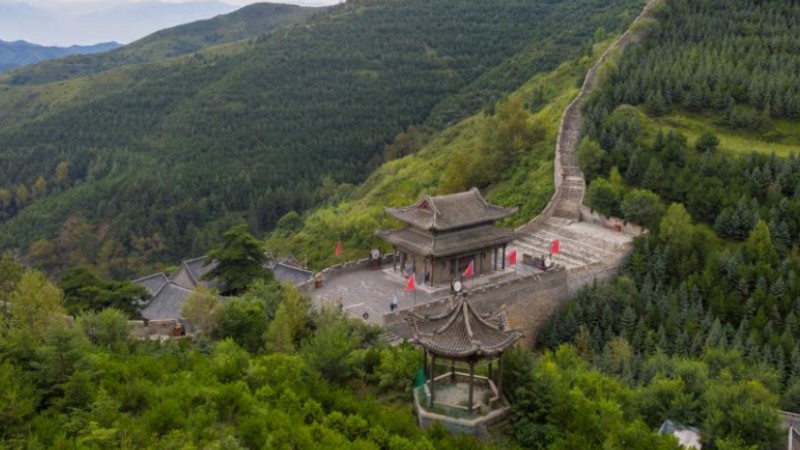Beijing Central Axis embraces digital tech at int'l services trade fair
BEIJING, Sept. 6 (Xinhua) -- Standing in front of a huge screen, tourists can see a cartoon of Chinese mythical giant bird Kunpeng, which pops up and shows them around major old city buildings located along Beijing's Central Axis, starting in the south and ending in the north of this axis.
Looking from Kunpeng's eye view, tourists get to "fly over" the Yongding Gate, the Forbidden City, the Jingshan Park and the Drum Tower and Bell Tower, enjoying scenes of "sky-reaching" ancient palace gates, rivers flowing under stone bridges and bustling city streets.
This immersive experience is provided by Beijing Kingsmo Co, Ltd. at the thematic exhibition on culture and tourism services at the 2023 China International Fair for Trade in Services. A total of 817 enterprises, including 47 Fortune Global 500 companies and industry leaders, have participated in the exhibition this year.
The video featuring Kunpeng has combined the legend of Kunpeng in Chinese ancient literature "Shan Hai Jing," or Classic of Mountains and Seas, with the Central Axis, and this fusion is supported by technologies including naked-eye 3D display, satellite remote sensing, digital twin, and cloud rendering.
"While watching the video, audiences can also interact with it by waving their arms to click the landmarks they are interested in, and then they can 'stop' and read introductions which appear on the screen," said Ali Yang, founder and CEO of the company.
First created in the Yuan Dynasty (1271-1368), the Beijing Central Axis, or Zhongzhouxian, stretches 7.8 km between the Yongding Gate in the south of the city and the Drum Tower and Bell Tower in the north. Most of the major old-city buildings of Beijing sit along this axis.
Chinese authorities have planned to recommend the Beijing Central Axis as China's 2024 world cultural heritage application project. It was included on the preliminary list of China's world cultural heritage sites in 2012.
"I was so impressed when I saw those ancient buildings located along one straight line, and I plan to take city walks on the weekends to visit them one by one," said a tourist surnamed Sun.
"Digital products show the charm of the Central Axis by breaking through the boundaries of time and space, and it is so magnificent," she added.
Digital technology can increase the transmission speed and heighten the intensity of traditional culture, making it more popular among young people, said Yang.
The wider application of digital technology in the culture and tourism industry also mirrors consumption upgrading, he said.
Behind these rich scenarios is the great strength of China in the high-quality development of the cultural industry and the deep integration of culture and technology.
In August 2023, China's Ministry of Culture and Tourism issued a notice announcing the first national smart tourism immersive experience new space cultivation pilot list, with 24 cultural venues, leisure blocks, theme parks, industrial parks, and tourist attractions selected.
In recent years, China's digital cultural and tourism industry has witnessed rapid growth while digitalization continues to empower the sector, said Chen Guizhen, an official with the Ministry of Culture and Tourism.
"We will continue to upgrade our digital products under the Central Axis theme, and in the future, visitors will even be able to 'enter' the ancient buildings, see their structures and listen to stories behind them," said Yang.
Photos
Related Stories
Copyright © 2023 People's Daily Online. All Rights Reserved.









